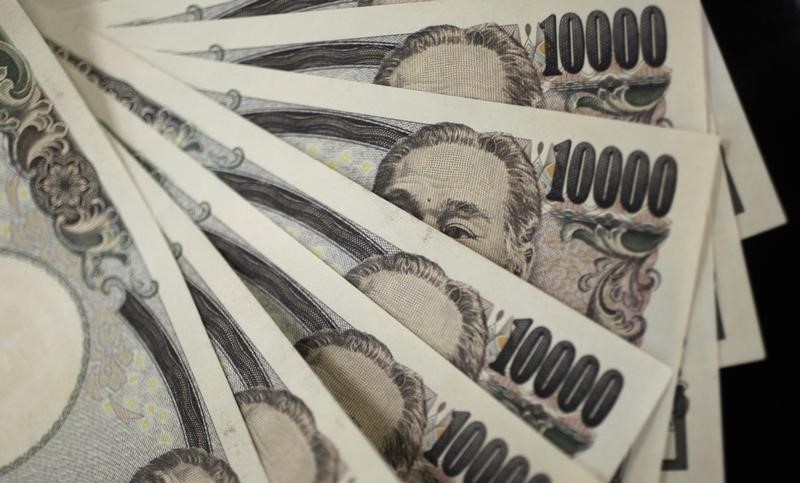Street Calls of the Week
Investing.com-- The Japanese yen weakened further on Monday, seeing little relief after middling signals from the Bank of Japan and increased expectations of higher-for-longer U.S. interest rates put the currency close to levels last seen in 1986.
The USDJPY pair- which pegs the number of yen required to buy one dollar, blew past the 160 level on after seeing what analysts described as a "flash crash" on Friday. Weakness in the yen came even with Japanese markets closed for a holiday.
The USDJPY pair rose as much as 1% to a 34-year high of 160.20. It was now close to reaching highs last seen in 1986, when the U.S. had threatened Japan with trade sanctions.
The yen’s decline came after the BOJ did not offer any concrete signals on monetary policy and weakness in the currency market during a meeting on Friday. While the central bank did hike its inflation outlook for the coming years, it also lowered its expectations for economic growth, raising questions over just how much the BOJ could potentially tighten monetary policy this year.
The BOJ had hiked rates for the first time in 17 years in March, citing an expected increase in inflation on the back of bumper wage hikes this year. But the move provided fleeting support to the yen.
Substantially softer-than-expected inflation data from Tokyo, which acts as a bellwether for Japan, also raised more questions over the BOJ’s forecast for higher inflation. Data on Friday showed inflation fell below the central bank’s 2% annual target rate in April.
But in addition to negative domestic signals, the biggest point of pressure on the yen was persistent concerns over a wide gulf between U.S. and Japanese interest rates.
U.S. PCE price index data- which is the Federal Reserve’s preferred inflation gauge- read hotter than expected for March, adding to bets that the central bank will be in no hurry to begin cutting interest rates.
The dollar shot up after the PCE data, also pressuring the yen.
The Fed is widely expected to keep rates on hold during a meeting later this week, and is also expected to present a hawkish outlook. The central bank is expected to only begin trimming rates by September, or the fourth quarter.
Intervention fears do little to stem yen losses
The USDJPY pair effectively blew past levels that traders believed would attract currency market intervention by the government. 155 was considered as the threshold until which the government would allow the yen to weaken, but this did not prove to be the case.
While Japanese officials have continued to offer verbal warnings, a lack of action on their end potentially signals limited resources to completely stem weakness in the yen.
A weaker yen also benefits Japan’s economy, which is heavily reliant on exports.
